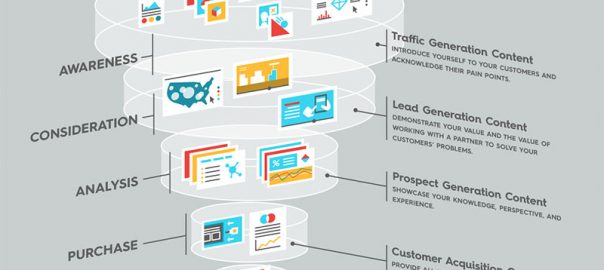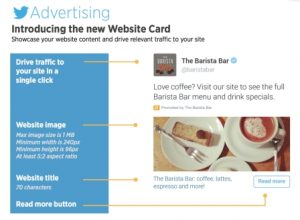Content marketing isn’t a nice-to-have these days; it’s an incredibly effective and necessary tool. Whether it’s increasing brand recall with an online video, generating more exposure through earned media, or delivering higher social engagement via microcontent, it is essential to your operation. That’s why 89% of marketers pursue content marketing, according to the Content Marketing Institute’s 2017 B2B Content Marketing Report.
But just creating content doesn’t mean you’re doing content marketing well. The best success comes when it’s executed correctly. Great execution entails many things:
- Building a solid content strategy
- Crafting a strong brand identity
- Creating content that connects with your customers on an emotional level
- Publishing consistently to maintain that connection
But even if you do all of these things, there is one thing that may be sabotaging your content marketing: approaching content with an advertising mentality.
Advertising is interruption marketing. It wedges itself into a buyer’s experience. True content marketing is engagement marketing. It participates in the buyer’s experience.
For many marketers, the advertising mentality is colliding with the content marketing mentality.
Many brands are approaching content marketing as a way to sell a product or service. As a result, their approach to content marketing is overly salesy. And they wonder why their efforts aren’t converting friends into customers.
Marketing and sales: a fine line
Sometimes it’s hard to know when marketing stops and selling begins. Because of that, there’s a tendency to create content with themes and ideas that are more appropriate in a sales setting.
When this happens, marketers end up doing sales—and that’s not their job. Their job is to attract people to your brand, to get them interested in learning about your perspective, what you have to say, and what you stand for. It’s hard for marketers to do this successfully if they are also aggressively trying to get people to buy stuff.
Of course, content serves different purposes at each stage of the buyer’s journey. As people become familiar with your brand and begin to express an interest in your offers, it is important to have those sales conversations with them—but only once they get to that point. (Unfortunately, the Content Marketing Institute found that only 53% of marketers craft content based on specific points of the buyer’s journey.)

So, how do you ensure that content marketing and sales collaborate instead of cannibalize each other? And how do you make sure nothing falls through the cracks along the way? By developing a killer buying experience that lets marketers deliver potential customers to the sales door and lets sales make sure they get through that door safely. Here’s the two-part process to help you do that.
Part 1: Let Content Marketers Create Connection

The first step and the biggest priority for content marketers is to develop a rapport between your brand and your would-be customers. You want to develop true “friendships” with your audience. The end goal is to develop some sense of interest, excitement, and attachment in the buyer.
The best way to do this? By telling brand stories that communicate what your brand stands for and what its values are. This helps your audience connect at a relationship level—it’s not a transactional experience.
There are many definitions of “story.” Ask 100 people and you’ll get 100 different answers. The stories I’m referring to are those that communicate your perspective and understanding of your customers’ experience. This content provides your audience value. It increases their knowledge, enhances their life, or relates to their experience.
Within a marketing context, you can tell your powerful stories by sharing:
- What has worked for you and what hasn’t worked
- What you’ve learned from your failures
- The secrets that have helped you grow
- What matters to you and your organization
- How you help your employees
Your audience relationship relies on transparency and understanding. Content that lets you show your human side, that demonstrates your willingness to help is key. To keep things simple, create content that is interesting and useful to other human beings.
Part 2: Carry That Connection Into Sales
A solid buyer’s journey is a cohesive, complete experience. As content marketers create that connection and move buyers to sales, there should be a seamless transition. If your marketing goal is to create an emotional connection with your customer, coming in with a hard sell will dismantle all the work content marketing has done.
Selling well against the backdrop of content marketing requires you to carry the same mentality in your sales as in your marketing: Put the customer first. The same friendly, helpful positioning should infuse your sales conversations. Make your customers a priority and ensure your customers’ goals are understood and addressed.
At the sales level, carrying over a content marketing mentality includes taking every opportunity to connect and engage. This may include:
- Having proper calls to action
- Keeping in touch regularly so they have an easy way to buy from you
- Being responsive
- Asking for feedback (so valuable!)
- Finding opportunities to meet and talk with your customers
- Offering exclusive deals
- Providing gifts (or other signs of appreciation)
Additionally, the goodwill fostered during the buyer’s journey should continue after the sale is complete. In this sense, content can come full circle. After you close a sale, sending a buyer a relevant blog post or interesting piece of data helps reinforce that relationship, making them feel genuinely cared for.
The goal is to marry your sales and content marketing to create a solid ecosystem.
Sales and content marketing teams must be aligned
One of the biggest barriers to creating a cohesive buyer’s journey is internal siloing. Many companies have separate leadership teams and use different playbooks for marketing and sales. This isn’t inherently wrong, but if these teams and these leaders aren’t talking, strategies won’t be as effective and your customers may suffer for it. (Learning how to build a solid inside sales team is key to helping create a cohesive operation.)
You can’t dictate the timeline of when or if anyone becomes a customer; it’s up to them to decide when they’re ready to buy. But if you design your content marketing process well and thoughtfully, the end result will feel invisible to the buyer. And that’s how you turn friends into customers—without selling stuff.
Business & Finance Articles on Business 2 Community(51)
Report Post





